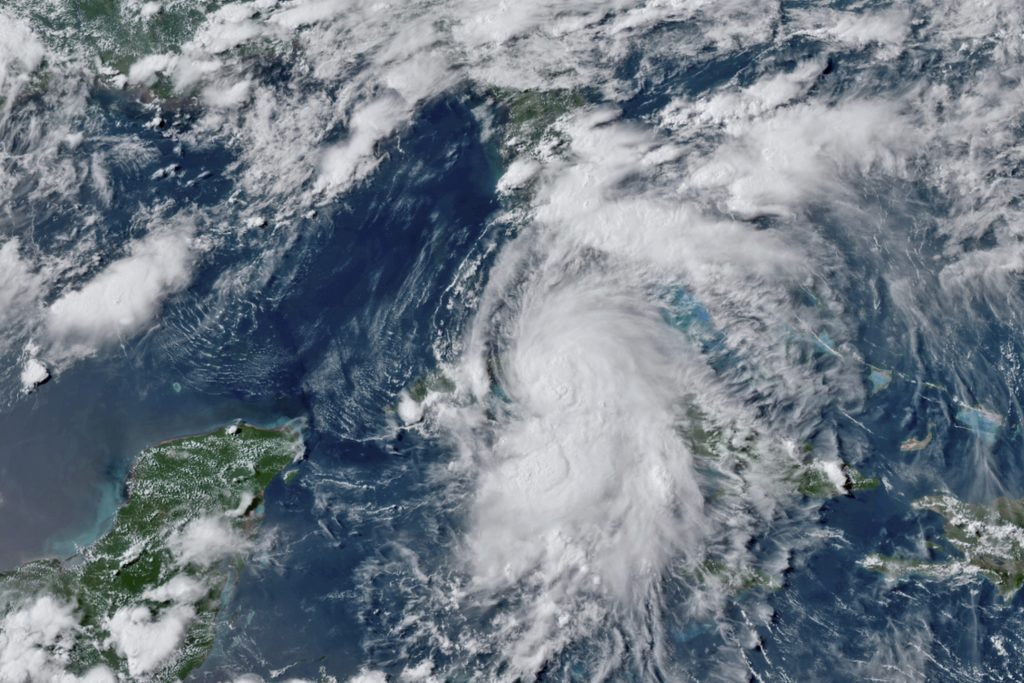The weather was getting worse in southern Florida on Tuesday morning as Tropical Storm Elsa began lashing the Florida Keys, complicating the search for survivors in the condo collapse and prompting a hurricane watch for the peninsula’s upper Gulf Coast.
In addition to damaging winds and heavy rains, the Miami-based U.S. National Hurricane Center warned of life-threatening storm surges, flooding and isolated tornadoes. A hurricane watch was issued for a long stretch of coastline, from Egmont Key at the mouth of Tampa Bay to the Steinhatchee River in Florida’s Big Bend area.
The Tampa area is highly vulnerable to storm surge because the offshore waters and Tampa Bay are quite shallow, experts say.
But on the barrier island beach towns along the Gulf Coast, it was largely business as usual with few shutters or plywood boards going up. Free sandbags were being handed out at several locations, and a limited number of storm shelters opened Tuesday morning in at least four counties around the Tampa Bay area, although no evacuations have been ordered.
Bands of rain were expected to reach Surfside on Florida’s Atlantic coast, soaking the rubble of the Champlain Towers South, which collapsed June 24, killing at least 32 people. Search and rescue crews have worked through rain in search of more than 100 others listed as missing, but must pause when lightning threatens, and a garage area in the pancaked debris already filled with water Monday, officials said.
Elsa’s maximum sustained winds stood at 60 mph (95 kph) early Tuesday. A slow strengthening is forecast through Tuesday night and Elsa could be near hurricane strength before it makes landfall in Florida. Its core was about 65 miles (105 kilometers) west-northwest of Key West, Florida, and 215 miles (345 kilometers) south of Tampa. It was continuing to move to the north-northwest at 10 mph (16 kph).
The forecast included the possibility of tornadoes across South Florida on Tuesday morning and across the upper peninsula later in the day.
Florida Gov. Ron DeSantis expanded a state of emergency to cover a dozen counties where Elsa was expected to make a swift passage Wednesday, and President Joe Biden approved an emergency declaration for the state ahead of the storm.
Forecasters predicted Elsa would hit coastal Georgia and South Carolina after Florida. Georgia’s coast was under a tropical storm watch, as was much of the South Carolina coast. Forecasters said tornadoes could strike in the eastern Carolinas and Virginia as Elsa moves north.
The storm surge could reach 5 feet (1.5 meters) over normally dry land in the Tampa Bay area if Elsa passes at high tide, forecasters said. Commander Col. Ben Jonsson said only essential personnel were being allowed Tuesday morning on MacDill Air Force Base, which is located along the bay on the South Tampa peninsula.
Tampa International Airport planned to shut down Tuesday at 5 p.m.
At a Tuesday morning news briefing, DeSantis reminded residents not to focus on the Tropical Storm Elsa’s so-called “cone of concern” because the storm’s “impacts are expected well outside that area.”
“And if you look at how the storm is it’s incredibly lopsided to the east,” DeSantis said. “So most of the rainfall is going to be east of the center of the storm.”
Elsa’s westward shift spared the lower Florida Keys a direct hit, but the islands were still getting plenty of rain and wind Tuesday. Tropical storm warnings were posted for the Florida Keys from Craig Key westward to the Dry Tortugas and for the west coast of Florida from Flamingo northward to the Ochlockonee River.
Cuban officials evacuated 180,000 people against the possibility of heavy flooding from a storm that already battered several Caribbean islands, killing at least three people. But Elsa spent Sunday and much of Monday sweeping parallel to Cuba’s southern coast, sparing most of the island from significant effects.
Elsa is the earliest fifth-named storm on record, said Brian McNoldy, a hurricane researcher at the University of Miami.
